Choosing the Right Rifle Barrel
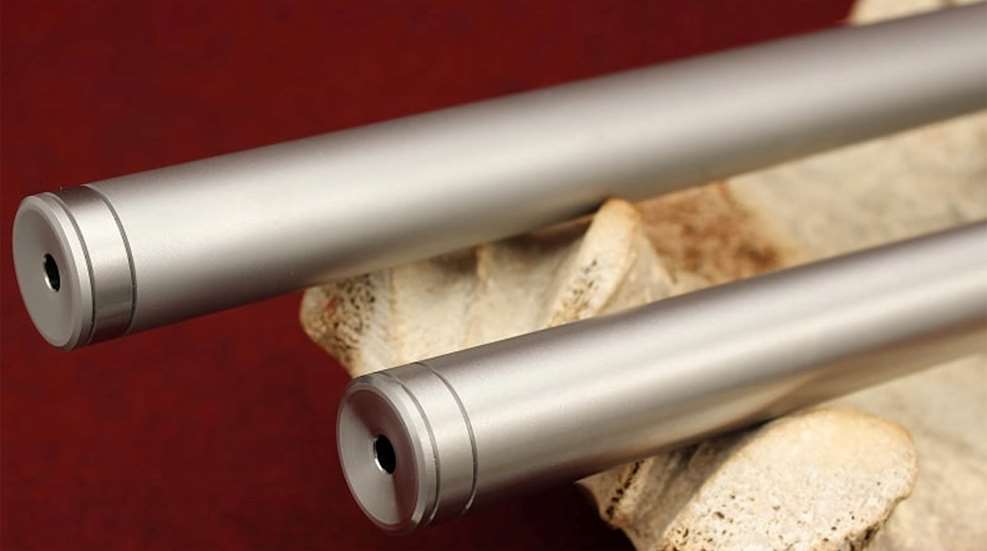
Choosing the Right Rifle Barrel – NRA Women.com
Whether you are hunting, plinking or competitive shooting, the right barrel can help you achieve your shooting goals.
The barrel is a critical component of any gun. There are three parts that make up every firearm: action, stock and barrel.
The component that usually gets the most attention is the action. Rifle actions are always up for debate among shooters. Consumers have a choice of bolt-action, lever-action, slide (pump) action, hinge (break) action, semi-automatic action and even Class III full-automatic actions. The benefit to having so many rifle actions is that consumers have choices and can purchase the one best for their activity.
Stocks also receive a lot of thought. There are wood, synthetic and metal stocks. They vary in aesthetics, functionality and adaptability. Stocks can be purchased with raised or adjustable combs, and some stocks are telescoping or foldable. Thanks to the plentitude of options, today’s shooters can find stocks that fit them more easily than in the past.
Barrels seem to receive the least amount of thought by many consumers. However, it could be argued that the barrel is the most important part of the firearm. After all, the twist rate in the barrel stabilizes the flight of the projectile and the length of the barrel can affect ballistics. Barrels can also come threaded for muzzle breaks, flash suppressors and noise suppressors.
The design of the barrel can affect the weight, accuracy and cost of the firearm. The common types of barrels on the market today are tapered barrels, bull barrels, fluted barrels and carbon fiber barrels. Whether you are hunting, plinking or competitive shooting, the right barrel can help you achieve your shooting goals.
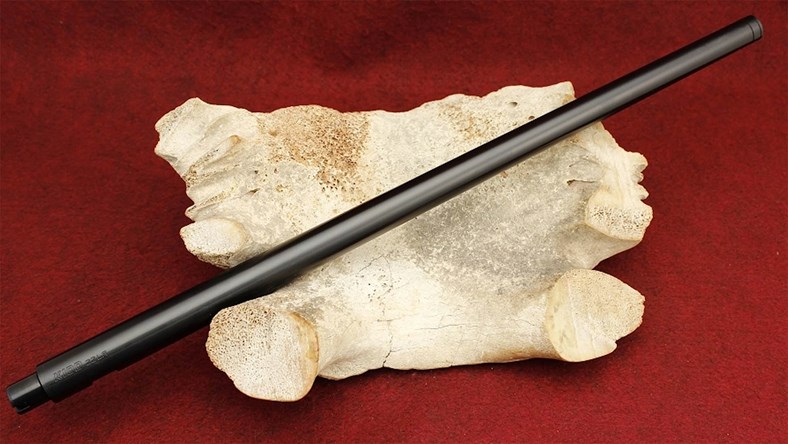
Straight Tapered Barrels
Straight tapered barrels are the most common and are the preferred barrel for hunting rifles. A tapered barrel is round and the breech end is larger than the muzzle end. This is because the pressures are higher at the chamber than the muzzle.
There are several benefits to a tapered barrel. Tapering the barrel saves weight while maintaining strength. It also makes the firearm more balanced. The weight of the barrel sits on the central axis of the firearm. This makes the firearm easier to control and allows you to swing on target more smoothly.
Accessories such as muzzle brakes, flash suppressors and noise suppressors are easily attached to tapered barrels. Tapers allow for consistent alignment between the muzzle and muzzle devices. This is because the taper allows the projectile to exit the muzzle and stay centered in the device. This prevents “baffle strike,” which is the projectile contacting the internal components of the muzzle device.
Another benefit of tapered barrels is the strong bond between the threaded end of the barrel and the muzzle device. This happens because there is more contact between the surface area of the tapered barrel threads and the muzzle device threads. Therefore, you can hand-tighten a suppressor and it will remain snug. In fact, it is harder to break the bond, or unscrew the device, than it was to tighten it. The tightness of the bond is also what prevents the gasses from the spent round from escaping back past the threads and into the shooter’s face.
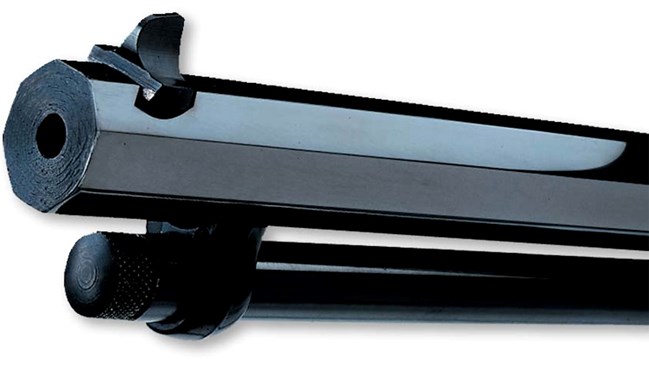
Octagon Barrels
Octagon barrels are eight-sided and usually found on lever-action rifles. This type of barrel gives a firearm a classic and historic look. These barrels are usually heavier than straight tapered barrels. This heavier barrel has several advantages. First, the weight of the barrel can tame recoil from larger calibers. The thickness of the barrel can also help with accuracy, as with bull barrels (more on those in a moment). The shape of the barrel can also help in dissipating heat after the shot.
Octagon barrels can be useful in firearm training courses. They make it easy to see if the shooter is canting the firearm. This is one of the most common issues for new shooters. The octagon barrel allows the shooter to look down the barrel when shooting to see if he or she is holding the firearm straight or if it is canted.
The weight of octagon barrels can also be a disadvantage if carrying the firearm over long distances. The shape of the barrel also causes higher manufacturing costs. This cost is passed on to the consumer, making a rifle with an octagon barrel more expensive.
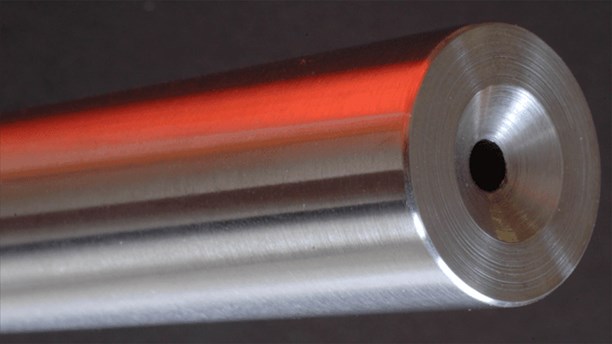
Bull Barrels
The bull barrel is the choice of competition shooters due to its accuracy. There are many benefits to bull barrels. All other factors the same, bull barrels produce more accurate shot placements than other barrels. There are several reasons for this. First, the bull barrel is very thick. As a result, it absorbs heat better than standard barrels. This allows the shooter to fire more shots without affecting shot placement. When metal heats up, it expands and affects the projectile’s trajectory.
The thickness of the barrel also adds weight to the firearm. The additional weight combined with the thickness creates consistency. The thickness of the barrel reduces vibrations after the shot. The less a barrel moves, the more accurate it is. The weight also reduces recoil by absorbing energy from the spent round.
There are several disadvantages to bull barrels. These barrels are very expensive which adds to the cost of the firearm. Additionally, the firearm is extremely heavy which is a disadvantage if you must carry the rifle over long distances. As noted, bull barrels are usually used in competition rifles and are not carried very far from the ready area to the firing line. Once on the firing line, a competition rifle with a bull barrel is shot from a rest.
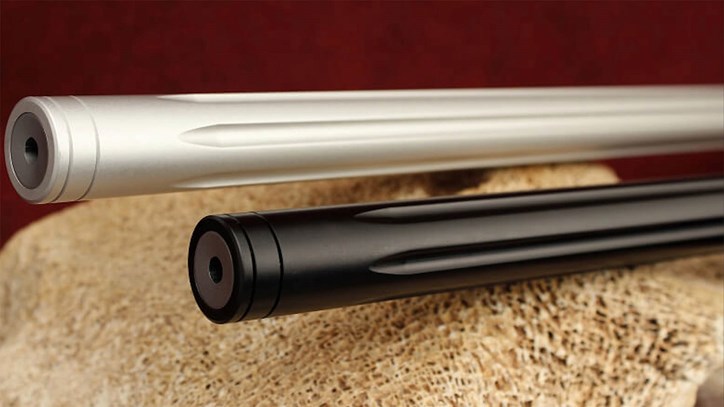
Fluted Barrels
Fluted barrels are those that have portions of the outer barrel removed by milling. Fluted barrels looks as if grooves were cut into the outside of barrel. These grooves can run straight from the breech to the muzzle, or they can be cut in a spiral motion.
Fluted barrels are lighter, thus reducing the overall weight of the firearm. The grooves, while reducing the weight, make the barrel more rigid. Fluted barrels also cool down quickly. On the flip side, the fluting also allows the barrel to heat up quickly, which means it may not be ideal for firing multiple shots or when shooting quickly is required. However, a fluted barrel is ideal for hunting if a follow-up shot is needed.

Carbon-Fiber Barrels
Carbon-fiber barrels are actually carbon fibers wrapped around a steel barrel. There are many advantages to this type of barrel. Carbon-fiber barrels are very accurate as long as the shooter is following the proper shooting fundamentals. These barrels are very strong, meaning there is less vibration when a shot is made. Less vibration equals consistency and accuracy.
The carbon fibers also help dissipate heat. This prevents the movement of the barrel through expansion, and thus does not affect the trajectory path. By dissipating heat, the barrel will have a longer life. Heat is the enemy of any machinery, so if you can minimize heat, you minimize wear.
Another benefit to carbon-fiber barrels is less maintenance. Since the carbon fibers cannot rust, that is one less thing the owner needs to worry about. This does not mean the shooter can disregard proper cleaning after each use. Rust is not a problem on the outside of the barrel, but the other parts of the firearm are still susceptible.
